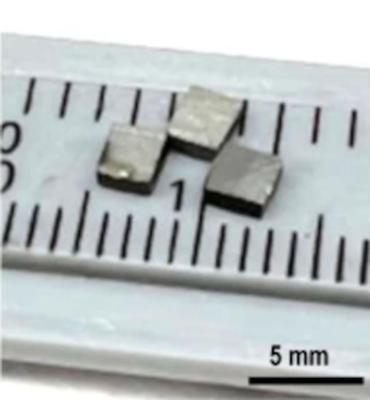Perovskite-Info weekly newsletter
Published: Tue, 02/28/23
The Perovskite-Info newsletter (February 28, 2023)
Cannot read this? View it online here
Researchers develop new high throughput method for the production of halide perovskites
Researchers from Penn State and the U.S. Army Combat Capabilities Development Command Aviation & Missile Center have created a new process to fabricate large perovskite devices that is more cost- and time-effective than previously possible and that might accelerate future materials discovery.
“This method we developed allows us to easily create very large bulk samples within several minutes, rather than days or weeks using traditional methods,” said Luyao Zheng, a postdoctoral researcher in the Department of Materials Science at Penn State and lead author on the study. “And our materials are high quality — their properties can compete with single-crystal perovskites.”
Researchers develop new approach for lead-free capping materials
Researchers from Nanyang Technological University, Singapore (NTU Singapore) and the Institute of Materials Research and Engineering (IMRE) at the Agency for Science, Technology and Research (A*STAR) in Singapore have developed a method for capping materials based on non-toxic metals being used in the manufacture of perovskite solar cells.
(Left) A diagram showing the different layers of the perovskite solar cell capped with the zinc-based capping material fabricated by the researchers. (Right) The dotted green rectangle indicates the active region of the perovskite solar cell that captures sunlight and converts it to electricity. Image: NTU Singapore / Nature Energy
Perovskite solar cells are made of several layers of materials, including a perovskite layer that harvests light and a capping layer. The capping layer is coated onto the perovskite layer to protect the solar cell from environmental stresses such as heat and moisture and to boost the performance of the cell. To ensure that the capping layer is compatible with the underlying perovskite layer, researchers typically use an approach called the half precursor (HP) method to fabricate the capping layer. One of the precursor chemicals is first deposited on top of the perovskite layer which provides the other precursor. Through a process known as cation exchange reaction, the deposited precursor then reacts with lead ions present in the perovskite layer beneath to form a lead-based chemical compound that makes up the capping layer. As a result of the HP method, lead is also present in the protective capping layer. A method that enables non-toxic metals to be used in the capping layer could be a game-changer for perovskite solar cells.
Researchers raise the efficiency of an inverted perovskite solar cell via mixed solvent vapor annealing method based on ethylenediamine (EDA)
Scientists from the University of Konstanz in Germany, Quaid-i-Azam University and Kohsar University Murree in Pakistan and Huazhong University of Science and Technology in China have fabricated an inverted perovskite solar cell with a passivation technique utilizing a mixed solvent vapor annealing method based on ethylenediamine (EDA).
The team managed to show how simple passivation can improve both the performance and operational stability of a perovskite solar cell. The scientists said EDA has been used in previous research projects to suppress the defect states in different kinds of perovskite. However, the exact way that EDA contributes to the morphology, defect passivation and optoelectronic properties of perovskite films was unclear.
Researchers develop inkjet-printed flexible semitransparent solar cells with perovskite and polymeric pillars
Researchers from The Hebrew University of Jerusalem in Israel have reported the fabrication of flexible and semitransparent perovskite-based solar cells.
Much of the research in the field of building-integrated photovoltaics is focused on semitransparent perovskite solar cells on glass substrates, which can be utilized as glass windows during the construction of the buildings. In their recent study, the team chose to develop cells that can be used in existing windows through a retrofitting process.
Metalgrass LTD
9 Har Tsin St.
Kfar Sava Hasharon 4430809
ISRAEL
Unsubscribe | Change Subscriber Options







